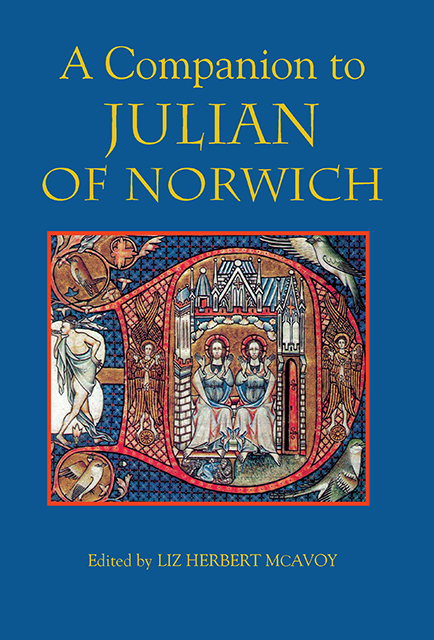8 - Julian's Second Thoughts: The Long Text Tradition
Published online by Cambridge University Press: 10 March 2023
Summary
This boke is begonne by Goddes gifte and his grace, but it is not yet performed, as to my sight. (Revelation, 86.1–2)
The survival of two versions of the text of Julian of Norwich – both judged authentic by modern scholarship – provides an opportunity to chart the development of a mystic mind and a contemplative writer in their recording of how Julian responds to the challenge of interpreting her original revelatory experience. Only one mid fifteenth-century manuscript – London, British Library MS Additional 37790 – preserves the shorter form, in a compendium of contemplative reading (outlined by Marleen Cré at the start of her essay), while the fuller version, some six times longer, survives complete in three post-Reformation manuscripts. Development in form and content between these two extant versions of Julian's text is so extensive that there may well have been intervening versions that do not survive. Some personal and circumstantial details about the showings as an event are included in the shorter version (A Vision Showed to a Devout Woman) but go unrecorded in the longer text (A Revelation of Love), arguably because the former is nearer in composition to the experience. Such internal evidence points to the Vision being an authorial recension of Julian’s work, and one that precedes the longer version (A Revelation of Love) rather than being abridged from it (even though A Vision is preserved in an anthology that includes abridgements of other contemplative works).
The showings, which start when a dying Julian sees the blood on a painted crucifix begin to trickle and spread, prompt her to a lifetime of subsequent meditation, of which A Revelation is the outcome. Julian's visions focus on uniquely detailed insights – as in her First Revelation of the blood on Christ's forehead – but in A Revelation this visuality is also enhanced by distinctively dynamic perceptions (Christ's blood spreads like herring scales, for example, and it streams down like rain pouring over eaves: Revelation, 7.17–20). In her Second Revelation in the Short Text Julian records seeing ‘alle his blissede face a time closede in dry blode’ (Vision, 8.4–5), but in A Revelation this has become:
And one time I saw how halfe the face, beginning at the ere, overyede with drye bloud till it beclosed into the mid face.
- Type
- Chapter
- Information
- A Companion to Julian of Norwich , pp. 101 - 115Publisher: Boydell & BrewerPrint publication year: 2008
- 5
- Cited by

